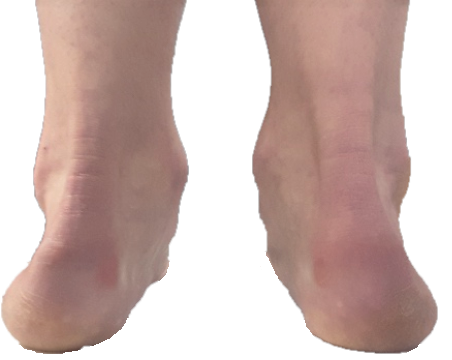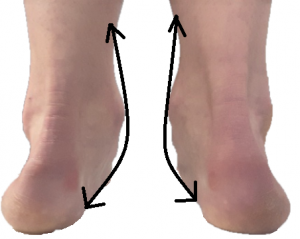
Orthotics for Tendonitis
Tendonitis can be a painful condition that affects the day to day life. There are many different ways of dealing with tendonitis, including orthotics. How can orthotics help for tendonitis conditions?
What is tendonitis?
First, knowledge of what tendonitis is can help explain how orthotics can help. The structures that tendonitis affects are the tendons in the body. Tendons are the structures that connect the muscles in your body to the bones. They do not actively contract and relax like muscles do, but they are passively pulled and released in response to the muscles.
The “itis” part of tendonitis means inflamed. When the tendon becomes repetitively injured over time and the body is not able to keep up to healing the tendon, it becomes inflamed in a more constant response of healing.
Tendonitis can happen in any tendon in the body, but there are more common areas due to activities we do. For example, we use our achillies tendon every time we are on our feet and the load increases with exercise like running or explosive movements.
Causes of tendonitis
Because tendonitis is from overuse of the tendon, you may be able to say that tendonitis came from a specific activity. This may be the case, but there are other factors that can contribute to the injury.
As it relates to foot orthotics, the feet can contribute to strain at tendons in the lower body. A low arch or overpronation rotates the foot inwards, which rotates the lower leg and thigh inwards. This pulls the muscles on the bottom of the feet, the inside of the lower leg, and the outside of the thigh. A high arch or supinated foot has the opposite effect. The feet roll outwards, pulling the muscles on the outside of the lower leg and inside of the thigh.
How orthotics are used for tendonitis
To relieve stress at the tendon, orthotics help to align the feet in a more optimal position for the affected tendon. If the tendon is strained from the lower leg rolling in, the orthotics bring the feet up to rotate the lower leg out to reduce stress at these tendons.
Some of the more common tendonitis conditions related to the feet are achilles tendonitis, posterior tibial tendonitis and patellar tendonitis.
Achilles tendonitis
Achilles tendonitis can be related to the foot rolling both in or out. When the heel is rolling too far one way or the other, the achilles tendon is pulled in that direction. This is because the achilles tendon is connected to the back of the heel bone. Orthotics help to stabilize the heel and reduce the pull on the achilles tendon.

Posterior tibial tendonitis
Posterior tibial tendonitis is usually related to a flat foot or over pronation. The posterior tibial tendon runs along the inside of the foot and attaches to the bottom of the arch. The muscle it’s connected to (tibialis posterior muscle) is a major muscle that supports the arch. A flat foot or over pronation puts a lot of strain on the posterihg foot back upwards, the posterior tibial tendon can find a lot of relief.
Patellar tendonitis
Patellar tendonitis, like achilles tendonitis, is also related to both the foot rolling in or out. The patellar tendon runs through the patella (knee cap) and inserts into the top of the tibia bone (lower leg). When the feet are rolling in or out, the tibia bone rotates in or out. With the rotation of the tibia, comes the pull at the patellar tendon. Foot orthotics control the movement at the feet, which prevent rotation at the tibia and pull on the patellar tendon.
Other Pedorthic treatments for tendonitis
In addition to controlling the feet through foot orthotics, proper shoes can also make a big difference. Shoes with the proper support will compliment the foot orthotics to give them the best possible chance of optimal support. They also have features that can further reduce stress on the muscles. For example, a rocker sole on a shoe helps the foot move through the walking cycle, which can reduce strain on certain muscles.
Other treatments for tendonitis
Other health professionals treat tendonitis as well because there are usually other factors contributing to tendonitis. These can be muscle imbalances, tight muscles or the muscles were worked too fast and too soon for what they can handle. Some of these health professionals are also beneficial for accelerating the healing of tendonitis.
At home remedies such as ice, heat, stretching or rest can be beneficial, but is best practiced when instructed first by a health professional. They can give you the best combination of these treatments for your tendonitis, which can give you the best chance of healing properly.
Conclusion
Orthotics for tendonitis can be an effective treatment to reduce strain at the affected tendon. If you have any concerns about your feet and tendonitis, feel free to book an appointment.

You must be logged in to post a comment.